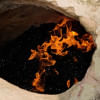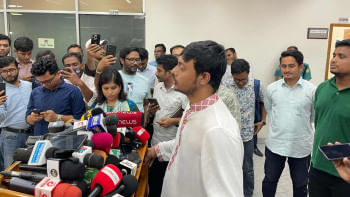Dancing in the storm

In the wake of a looming political and economic storm in Sri Lanka, I took a train to the country's cultural Kandy, with the intention to learn its popular traditional dance form called Ves Natum. This quest for the silver lining landed me in Amunugama, an ancient village named after the celebrated family of dancers and drummers who once performed at the courts of the Kandyan kings. I was welcomed by Dr Waidyawathi Rajapakse, the daughter of a legendary drummer who also established one of the most prominent Kandyan dance schools called Kalayathanaya (lit. center for art) in 1949. Since its inception, the Kalayathanaya has received students from all over the world until the global pandemic of 2020. However, neither the pandemic nor the ongoing domestic crisis seemed to have dampened the spirits of the beloved Gurutumi (teacher) Waidyawathi who is on a daily mission to keep the culture of dance and drumming alive through this institution.
During this week-long, physically challenging and mentally exhilarating, resident learning experience at Amunagama, my only respite was a bottle of freshly extracted tambili (king coconut) which my teacher packed for me every day. In those short breaks between practice, I always insisted on hearing stories about her journey, which she gracefully agreed to share with me. Whether it was dancing or talking, her eyes instinctively participated into the conversation. And when she danced, her physical strength was hard to miss, and her passion almost contagious. As I spent more time with her, I realized that my learning was hardly limited to just dancing. It brought me closer to knowing and understanding the hearts and minds of the Kandyans.
To learn this dance form was to learn the art of performing also known as the langue of the Ves dance, which can take years to master. The langue includes a basic uncompromisable squat position, an upright back and the eyes sharply focused on the hands drawing straight lines and circles in the air. These strong foundations and harmony in the movement were veritably ingrained in the whole of Sinhalese culture and society.
According to legend, the Kandyan dance and music tradition was born out of the temples and other religious ceremonies in the ancient Kandyan Kingdom. In the sacred Temple of the Tooth Relic, the ritual offerings to the Buddha continue to be made to the sound of drums. These drums, including the geta bera (not unlike the Indian Mridangam), the daula and the tammettama, are unique and central features of this dance form.
The popularity of Ves Natum (Dance) is rooted in the cultural identity of the Sinhalese. Even the costumes and ornaments donned by a Ves Dancer, follow a special code as informed by the Kandyan society's customs. The importance of these customs is well-acknowledged and reflected in their endurance against the ongoing crisis. Although images of Ves dancers are popular even outside Sri Lanka, watching a group of dancers perform will bring you closer to their real identity. The dancers are perfectly coordinated and pre-dominantly expressing themselves through Tandava movements, owing to the fact that this dance was originally performed only by males. However, it was opened to female dancers as the society adapted to different socio-economic and political realities. The inclusion of acrobatics in these performances is also illustrative of the openness of the dance form to experiments and evolution.
The Sri Lankans, much like their art, are driven by a set of values and traditions that can and have withstood any storm.

 For all latest news, follow The Daily Star's Google News channel.
For all latest news, follow The Daily Star's Google News channel. 








Comments